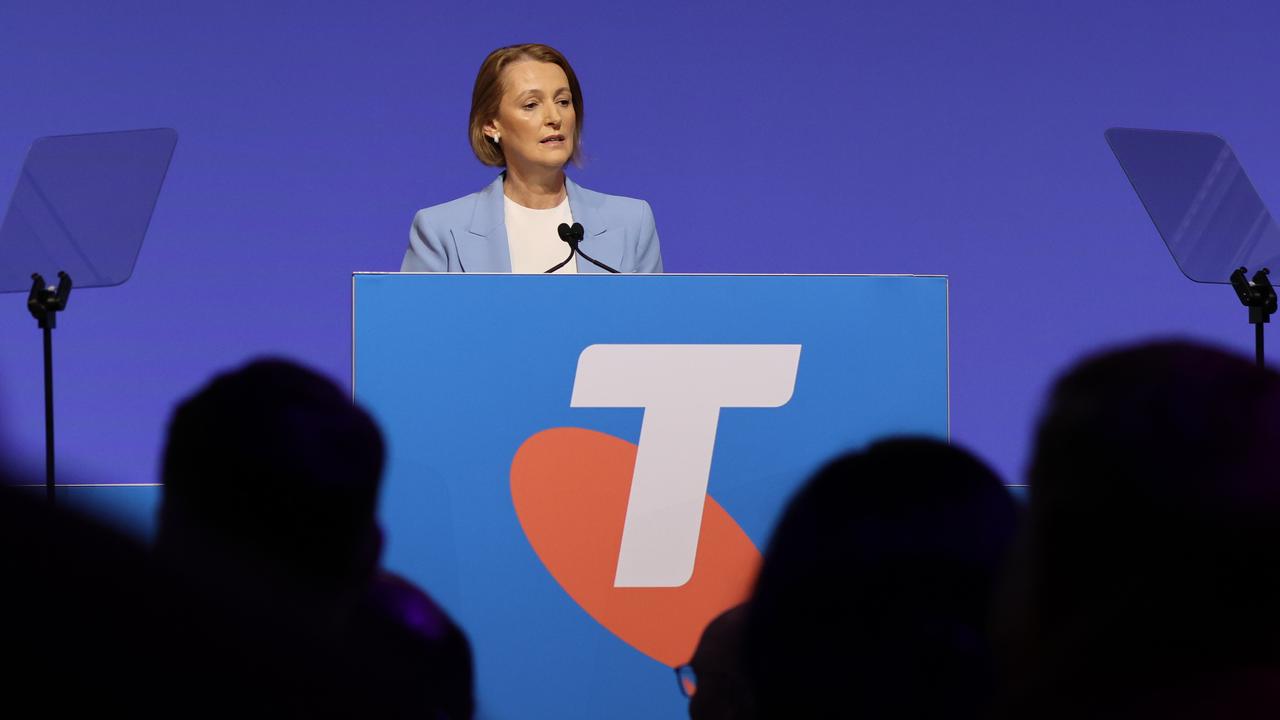Why the US sharemarket powers ahead of all rivals and leaves the ASX in its wake
US shares consistently beat ours for value and under newly installed President Donald Trump there are indications the pattern will accelerate.

Business
Don't miss out on the headlines from Business. Followed categories will be added to My News.
There are very few certainties in sharemarkets. But one thing is for certain about the return of Donald Trump: he is 100 per cent committed to lifting the US sharemarket.
For Australian investors this is a moment not to miss; US shares are the opportunity of 2025.
If you’ve missed the ‘‘move to the US’’ then it’s time to sit up and take notice. Using the flow of money into exchange-traded funds as a measure, up until last year everyday Australian investors put most of their money into local shares on the ASX and then a smaller amount into international shares.
In 2024 the trend reversed. Australians put $15bn into international funds which was more than double the amount placed in Australian share funds.
The same trend is clear on broking platforms where Australians buy direct shares. On an online brokerage platform such as Sharesies the vast majority of the action is now in US shares. It’s been almost 70 per cent of all trading value through January; last year the monthly average was 45 per cent.
What happened?
In 2023 it was the year the metaphorical penny dropped. The US market beats the ASX out the door year in and year out. But in 2024 the trend was confirmed beyond all doubt when total returns on the ASX were 11 per cent while on the S&P 500 they were 22 per cent.
Then two factors fell into place which locked in the trend.
First, the election of Donald Trump ensured that the US sharemarket would have all the support it could possibly need in the year ahead.
The consensus outlooks for the US and Australia showed the gulf between the two markets was set to continue. And on it goes. In the first few weeks of 2025 the US market did what we now expect it to do and returned twice as much as the ASX.
The S&P 500 recorded a new record high this week and the returns so far are about 4 per cent. The returns for the ASX 200 over the same period have been about 2 per cent.
What’s going on?
There are two sides to the story. Yes, the US market is in very good condition, but in contrast the ASX is most likely weaker than many investors might realise.
It’s been a steady slide but the ASX is struggling on many fronts. In fact the string of glitches and cock-ups on the technology front is most likely the least important issue for everyday investors.
A more worrisome trend is that the Australian sharemarket is actually shrinking and the number of listings is at its lowest level in 20 years.
Unfortunately, the hottest action is in foreign takeovers of major Australian listed assets such as the current battle for wealth manager Insignia, or the recent acquisition of Newcrest Gold.
At the same time there are very few new floats (initial public offerings). On every stock exchange in the world, IPOs are the lifeblood; and we have had the additional problem that one of the biggest floats last year, DigiCo, has been an early flop. This week DigiCo was still ‘‘under water’’, trading around $4.73 against its offer price of $5.
If you are a seasoned investor reading this, you might reasonably observe that there are cycles and a day will come when the ASX beats the US market. We have been waiting for that day for a long time now.
You might also harbour a notion that sky-high prices in the US mean that Australia’s modest returns imply that our stocks are better value than their American counterparts.
Sorry, unfortunately this is not the case – and it’s a biter pill for those who are digging their heels in, waiting for the ASX to move substantially higher.
Of course there are going to be ‘‘good’’ dividends on the ASX. We have one of the highest dividend payout ratios in global markets with an average yield on the ASX 200 of about 4 per cent before franking.
But Australian investors pay a very high price for this dividend stream. It’s the key reason companies do not reinvest in the business and more often than not gravitate towards excess concentration inside national borders. The banks and supermarkets are first-class examples of this issue.
As The Australian reported this week, even though the Australian shares have fallen behind US shares, it’s the Australian shares that are overvalued.
Huh? Yes, price and value are not the same thing. Here’s the numbers put together this week by the Morningstar research group: Australian shares are overvalued by twice as much as US shares.
Morningstar says Australian shares currently trade about 9 per cent above fair value compared with a 4 per cent premium on US markets. Morningstar’s Lochlan Halloway says “our market looks overpriced, so where might investors turn for diversification and better value? The US, the world’s largest stockmarket, is first to mind”.
What to do?
For as long as anyone can remember the key selling point about overseas markets was that Australia only represented a little over 2 per cent of global stockmarkets.
The broker or fund manager then asked: ‘‘So why do you have all your shares in Australia?’’
It’s a fair enough question. Certainly a ‘‘local only’’ investor will miss opportunities. For example, the ASX still does not have an IT or pharmaceuticals sector of any significance in terms of market capitalisation.
In many ways this is still an issue. Even at the big end of town, State Street recently reported that domestic shares still accounted for 44 per cent of ‘‘the average superannuation portfolio”.
Until recently, younger investors have led the move towards US shares for two reasons – the ease of access supplied by online brokers, and the excess returns that cohort would have gained in their initial investments in the US prompted scepticism about the ASX, especially if dividend income is not as important to them.
The arrival of ETFs has really changed this dynamic. The everyday investor can now put a toe in the US market with very little need to study the market itself. It’s a matter of buying $1000 worth or $10,000 worth of an ETF that covers the S&P 500 – or one that covers the Nasdaq for those that are more adventurous.
Now we know the history that the US has beaten returns on the ASX consistently for a decade. And we know that the Trump regime has been installed with a pro-market focus.
So it’s a matter of trying to guess what the returns in the year ahead might be.
On the Money Puzzle podcast I recently caught up with Marc Jocum, investment strategist at Betashares, who said the consensus forecasts for the year ahead sound similar to pattern of ASX inferiority now clearly established.
Over the next 12 months, the ASX is expected to be flat in terms of share prices, with dividends bringing in a total return somewhere near 4 per cent.
In the US where dividends hardly matter, the total returns are expected to be closer to 8 per cent. Twice as good.
James Kirby hosts the twice-weekly Money Puzzle podcast.
More Coverage
Originally published as Why the US sharemarket powers ahead of all rivals and leaves the ASX in its wake








